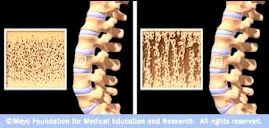For almost a year and a half (3/5/2023 through 8/17/2024), I reduced my daily dosage of strontium citrate from 682 mg of strontium per day to 341 mg (half dose) 4X per week and 682 mg (full dose) 3X per week. That averages out to 487 mg/day, which is 37 mg more than the MOTS study dosage of 450 mg for osteopenia.
Reducing my dosage was an experiment. I was not having any adverse events. On 8/18/2024, I resumed the full dose of strontium. During the year and a half at a reduced dose, I developed a myxoid cyst (digital mucous cyst) on my left thumb. Mucous cysts are frequently observed in individuals with osteoarthritis, especially in the distal interphalangeal (DIP) joint, which is the joint at the tip of the finger. Later, I developed a bump on the finger next to that thumb. It is likely a Bouchard's node. Bouchard's nodes are bony enlargements that develop on the middle joints (proximal interphalangeal joints) of the fingers. They are a common sign of osteoarthritis.
So, my main reason for resuming my full dose was worsening osteoarthritis. I had never had bumps on my fingers before, and any other osteoarthritic signs, such as stiffness or joint pain, had always been, and still are, minimal. I want to keep it that way.
I had a DXA scan with TBS on November 18, 2024. My left femoral neck BMD was slightly worse than my previous scan of 18 August 2022. It was 0.728 g/cm2 with T-score of -1.1 (osteopenia) in 2024, compared to 0.741 g/cm2 with T-score of -1.0 (normal density) in 2022. I had resumed my full dosage of strontium three months prior to the 2024 scan. My TBS showed normal bone microarchitecture! If I had not already resumed my full strontium dose, I probably would have done so after this scan due to the femoral neck results.
I caused my temporomendibular joint disorder (TMD) by clenching my jaws at night. I was unaware of doing that except that I would wake up with pain in my right jaw and right ear. Now, I wear Plackers Grind No More dental guards at night. They worked like a charm, and I have no more pain. Apparently, my TMD was not caused by osteoarthritis, which can affect the temporomendibular joint (TMJ), leading to TMJ disorder, also known as TMD. I had dental X-rays in January 2025, and my jaws and teeth looked fine.


